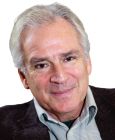Consciousness
How Your Brain Constructs Your Self
How the brain constructs a model of the world and the self.
Posted July 3, 2024 Reviewed by Lybi Ma
Key points
- We cannot experience the actual construction of the self.
- The model of the self connects perception and awareness.
- Out-of-body experiences can occur when the model construction is incomplete.
It is common to think that the self is what feels what you feel, dreams the dreams you have, and determines the actions you take. But in reality, your self is an illusion.
First, your brain creates a sensory model of the world that is so perfect you don't usually realize it's a construct. Then it creates an image of yourself that includes not only your perception of your body and your internal states but also your memories of your past self and your plans and hopes. This model of yourself is placed at the center of the world model and it gives rise to the experience of a self. But the world model that gives you an experience of what is happening around you is necessary for you to create an experience that your self also exists. The two models must align, otherwise we would be walking around with cracks in reality.
An important feature of the brain's construction of the world is that it creates a coherent picture. In reality, it takes varying amounts of time from when different sensory organs are stimulated to when the signal is processed in the brain. But the construct ensures that the experience is synchronized in time even though the actual experience of an event often occurs several tenths of a second after it happened. (It's like the brain making sure that lightning and thunder are always perceived at the same time when there is a thunderstorm.)
For example, the sound we hear when someone speaks is perceived at the same time as we see the person's mouth moving. This may seem obvious, but there are patients suffering from so-called disjunctive agnosia who cannot integrate what they see with what they hear. They experience the world as a movie where sound and image are not synchronized.
We cannot experience the actual construction of the self. The model of the self is 'transparent' in the same way that we do not notice that the lens in the eye creates a pattern on the retina that then gives rise to a visual experience. The eye is a tunnel between the world and the visual experience. Similarly, the self is a tunnel between the world and consciousness. Therefore, the self helps us experience: the ego model is needed to guide our actions and to understand what others are doing. When the ego model is not needed for these purposes, for example when we sleep, it is switched off. The idea that the self is a tunnel between the world and experience was developed by philosopher Thomas Metzinger in his book The Ego Tunnel.
The construction of the self sometimes slips. Many people describe that they have experienced that their self has left the body and that they have then seen themselves from the outside. It is debated how such out-of-body experiences can occur.
Psychologist Susan Blackmore says that such experiences consist of special world models that are constructed by the brain when its sensory input is limited, and are therefore based on information coming from within. An important fact about out-of-body experiences is that they only occur when the illumination is dim so that ordinary vision is limited and therefore easily supplemented by the brain's constructs.
A comparison Blackmore highlights is that when we create an internal map of an area, this map will most often be experienced from a bird's eye view where we see ourselves from above. An out-of-body experience is similarly constructed by the brain, but it is perceived as so realistic (in the absence of other sensory impressions) that one does not notice that it is a construction, but it is perceived in the same way as the ordinary world model.
One sign that this explanation is correct is that most people who describe out-of-body experiences describe their movements in space as occurring in jumps and not continuously as a normal movement. This is consistent with how we move across a mental map where we also make jumps between locations.
The claim that your self does not exist but is only a construct may seem radical. But our understanding of our awareness is still very incomplete. New research on consciousness and how it is realized by our brains will shatter many of the everyday beliefs about the self.
Facebook image: Erickson Stock/Shutterstock
References
Blackmore, Susan J. (1984). A postal survey of OBEs and other experiences. Journal of the Society for Psychical Research, 52(796), 225-244.
Metzinger, Thomas (2009) The Ego Tunnel: The Science of the Mind and the Myth of the Self, Basic Books, New York (2009).


